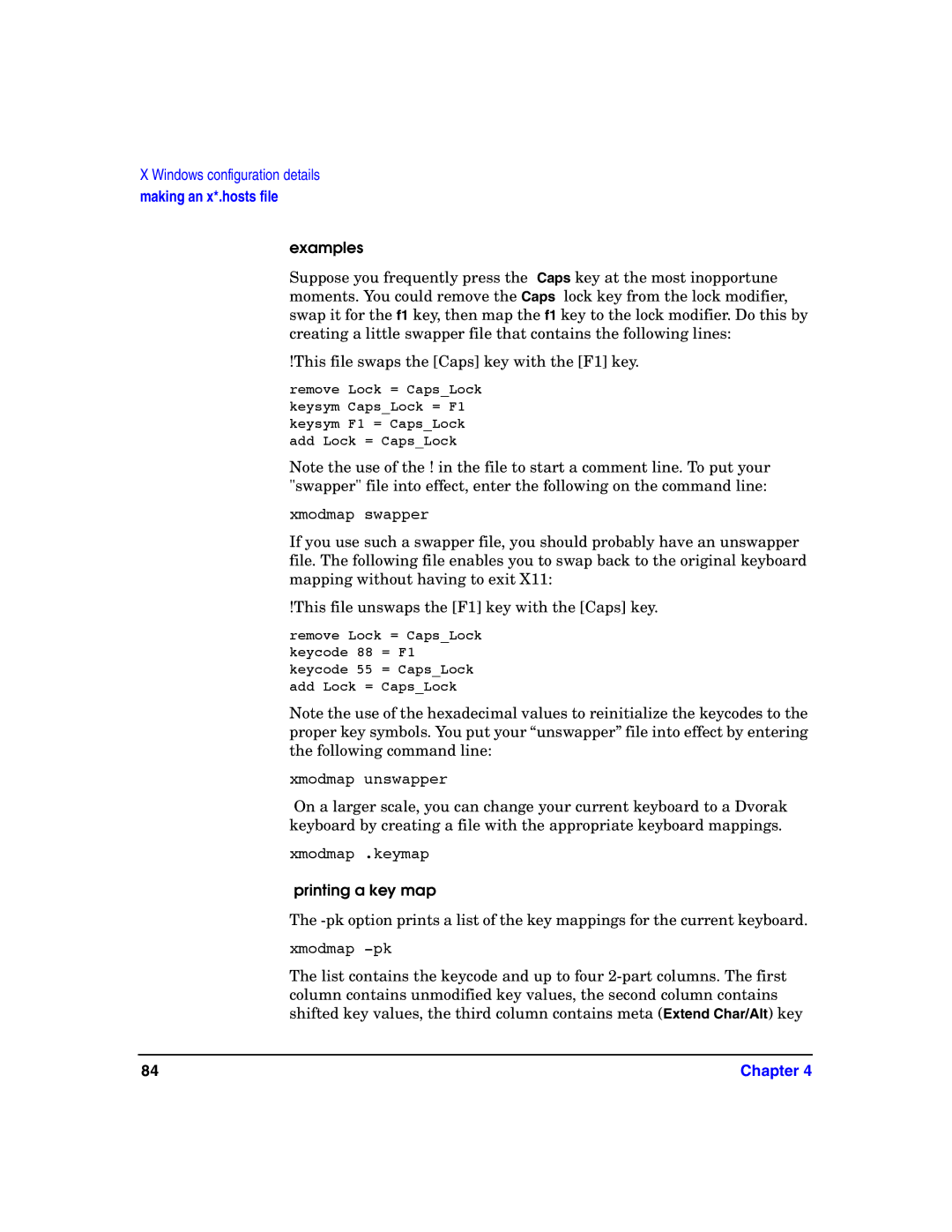X Windows configuration details
making an x*.hosts file
examples
Suppose you frequently press the Caps key at the most inopportune moments. You could remove the Caps lock key from the lock modifier, swap it for the f1 key, then map the f1 key to the lock modifier. Do this by creating a little swapper file that contains the following lines:
!This file swaps the [Caps] key with the [F1] key.
remove Lock = Caps_Lock keysym Caps_Lock = F1 keysym F1 = Caps_Lock add Lock = Caps_Lock
Note the use of the ! in the file to start a comment line. To put your "swapper" file into effect, enter the following on the command line:
xmodmap swapper
If you use such a swapper file, you should probably have an unswapper file. The following file enables you to swap back to the original keyboard mapping without having to exit X11:
!This file unswaps the [F1] key with the [Caps] key.
remove Lock = Caps_Lock keycode 88 = F1 keycode 55 = Caps_Lock add Lock = Caps_Lock
Note the use of the hexadecimal values to reinitialize the keycodes to the proper key symbols. You put your “unswapper” file into effect by entering the following command line:
xmodmap unswapper
On a larger scale, you can change your current keyboard to a Dvorak keyboard by creating a file with the appropriate keyboard mappings.
xmodmap .keymap
printing a key map
The
xmodmap
The list contains the keycode and up to four
84 | Chapter 4 |
